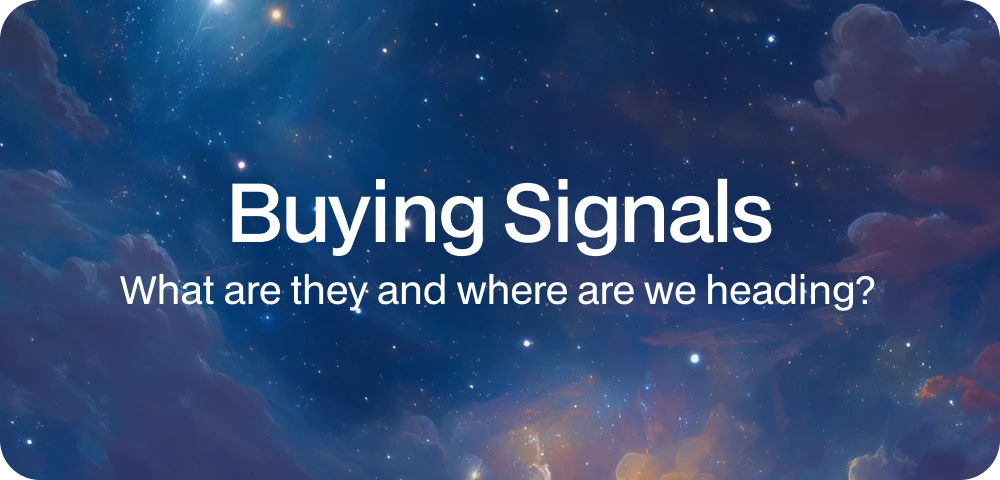Buying Signals in Outbound Sales: What They Are and Where We’re Headed

Buying signals have become a staple in outbound sales. They’re the small signs that someone might be ready to talk. Signals can be anything from a visit to your pricing page, engagement with a LinkedIn post, clicking a webinar invite, or following your company account. For years, these signals have been treated as the green light to reach out.
The trouble is, a single signal doesn’t mean much anymore. A click can be an accident, a form fill can be curiosity with no intent. Outbound teams that treat every action as a hot lead end up burning time, budgets, and goodwill.
What’s needed now is precision. Instead of reacting to isolated signals, the next phase is about connecting them. When someone reads three articles on scaling, comments on a founder’s post, and then checks out a case study, you don’t just see three signals—you see a journey. That journey tells you more about their challenges and the way to approach them.
Outbound Sales is Precision Marketing
Outbound sales is starting to look more like marketing. Where marketing builds funnels, segments audiences, and tracks engagement across channels, sales will increasingly do the same. The difference is that sales will need to make sharper, more immediate decisions. It won’t be about launching a broad campaign, it will be about spotting the right prospect at the right time with the right angle.
To get there, we’ll need to stitch together data from multiple places. LinkedIn, Twitter, YouTube, podcasts, blog visits, product sign-ups—they all hold fragments of a buyer’s story. AI is already making it possible to combine these into full profiles, giving salespeople the context they need before they ever send a message.
This shift matters because the old playbook of cold outreach is fading. B2B direct messaging is collapsing under the weight of volume. Unless you have the budget to flood the market with ads, the chances of standing out with a generic pitch are slim. What works now is adding value up front. Connecting with people, sharing content that speaks to their problems, and letting those interactions warm up the relationship before you ever ask for time.
Outbound won’t disappear; it will just evolve. It will move closer to marketing in practice, but sharper in execution. Sales teams will act less like hunters firing off thousands of shots, and more like curators who know exactly when to step in. The winners will be those who see the bigger picture, who connect the dots, and who can turn scattered buying signals into a clear and human story.














